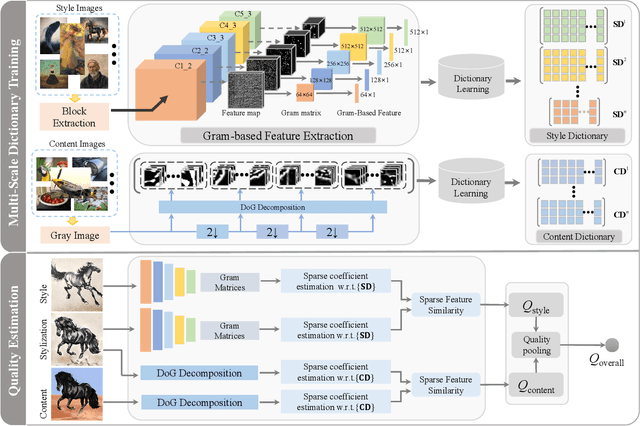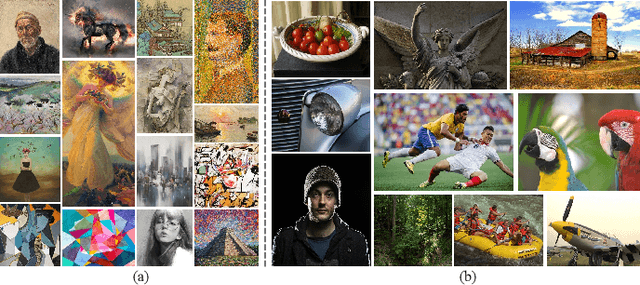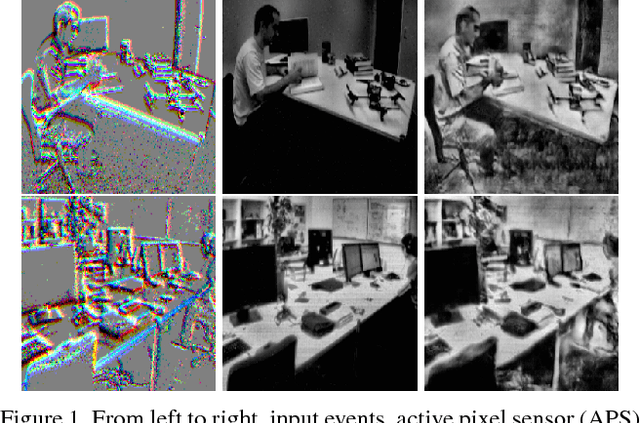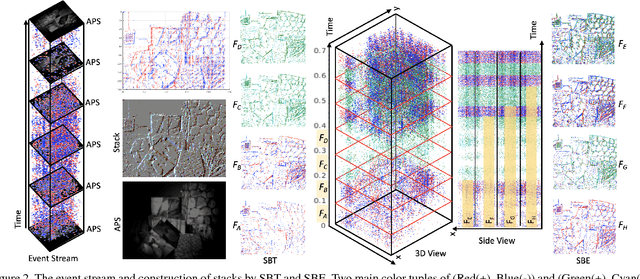Yo-Sung Ho
Quality Evaluation of Arbitrary Style Transfer: Subjective Study and Objective Metric
Aug 01, 2022



Abstract:Arbitrary neural style transfer is a vital topic with research value and industrial application prospect, which strives to render the structure of one image using the style of another. Recent researches have devoted great efforts on the task of arbitrary style transfer (AST) for improving the stylization quality. However, there are very few explorations about the quality evaluation of AST images, even it can potentially guide the design of different algorithms. In this paper, we first construct a new AST images quality assessment database (AST-IQAD) that consists 150 content-style image pairs and the corresponding 1200 stylized images produced by eight typical AST algorithms. Then, a subjective study is conducted on our AST-IQAD database, which obtains the subjective rating scores of all stylized images on the three subjective evaluations, i.e., content preservation (CP), style resemblance (SR), and overall visual (OV). To quantitatively measure the quality of AST image, we proposed a new sparse representation-based image quality evaluation metric (SRQE), which computes the quality using the sparse feature similarity. Experimental results on the AST-IQAD have demonstrated the superiority of the proposed method. The dataset and source code will be released at https://github.com/Hangwei-Chen/AST-IQAD-SRQE
Event-based High Dynamic Range Image and Very High Frame Rate Video Generation using Conditional Generative Adversarial Networks
Nov 20, 2018



Abstract:Event cameras have a lot of advantages over traditional cameras, such as low latency, high temporal resolution, and high dynamic range. However, since the outputs of event cameras are the sequences of asynchronous events overtime rather than actual intensity images, existing algorithms could not be directly applied. Therefore, it is demanding to generate intensity images from events for other tasks. In this paper, we unlock the potential of event camera-based conditional generative adversarial networks to create images/videos from an adjustable portion of the event data stream. The stacks of space-time coordinates of events are used as inputs and the network is trained to reproduce images based on the spatio-temporal intensity changes. The usefulness of event cameras to generate high dynamic range(HDR) images even in extreme illumination conditions and also non blurred images under rapid motion is also shown.In addition, the possibility of generating very high frame rate videos is demonstrated, theoretically up to 1 million frames per second (FPS) since the temporal resolution of event cameras are about 1{\mu}s. Proposed methods are evaluated by comparing the results with the intensity images captured on the same pixel grid-line of events using online available real datasets and synthetic datasets produced by the event camera simulator.
 Add to Chrome
Add to Chrome Add to Firefox
Add to Firefox Add to Edge
Add to Edge